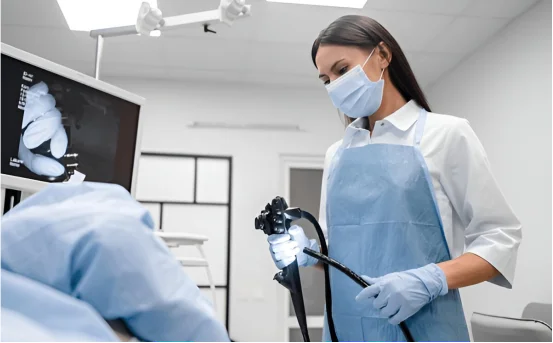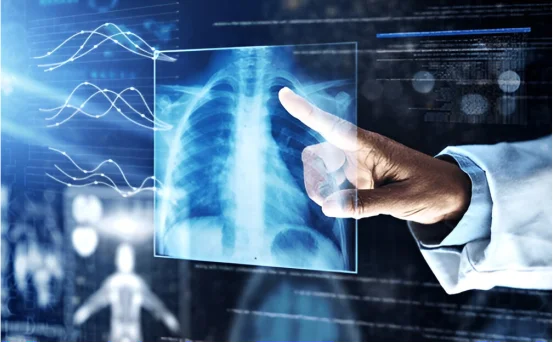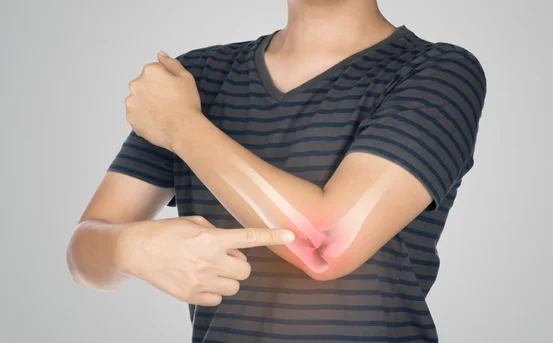The bronchoscopy surgery procedure is an important diagnostic and therapeutic tool used to examine airways and the lungs. A thin, flexible tube known as a bronchoscope allows healthcare professionals the ability to see the inside of tracheas, bronchi and lungs. The bronchoscope is a tool that has a camera and lighted lens, which allows for real-time images and in some cases tissue sampling.
Bronchoscopy is a minimally-invasive procedure that can be used to diagnose pulmonary problems. In hospitals and clinics, it is used extensively by pulmonologists and thoracic and oncologists.
Understanding bronchoscopy, its purpose, symptoms and causes, as well as treatment options, can help patients make informed medical decisions and receive timely care.
Why Bronchoscopy Surgery Is Performed
The bronchoscopy procedure is essential in the diagnosis and treatment for a wide range of respiratory disorders. This procedure is recommended for a variety of respiratory conditions.
Bronchoscopy surgery is essential in the diagnosis and treatment for a wide range of respiratory disorders. This procedure is recommended for a variety of respiratory conditions.
Diagnosis Lung Conditions
Bronchoscopy helps diagnose lung diseases such as:
- Lung infections
- Tuberculosis (TB)
- Chronic cough
- Lung cancer
- Interstitial lung disease
- Sarcoidosis
The collection of tissue samples, or biopsy, allows doctors to identify a disease’s type and stage with accuracy.
Treatment of Airway Disorders
Bronchoscopy is not only used for diagnosis but also:
- Remove obstructions such as mucus plugs and foreign bodies
- Control bleeding in the lungs
- Localized treatment using radiation or medication
- Tracheal stenosis (dilated narrowed airways)
- Laser therapy is effective for treating tumors
Monitoring Existing Conditions
Bronchoscopy can also be used to monitor lung conditions. This is especially true for patients who have undergone lung surgery or chronic inflammation.
- Chest pain :- Recurrent lung infections. Findings abnormal on a chest CT or X-ray. The symptoms of bronchial tube obstruction can be difficult to diagnose without a direct visual inspection.
- Bronchoscopy surgery symptoms :- A doctor may recommend bronchoscopy for a patient who presents with the following symptoms:
- Chronic cough or persistent cough (lasting longer than 8 weeks).
- Hemoptysis (coughing blood)
- Unexplained shortness in breath
The treatment for wheezing does not improve the condition
Common causes of bronchoscopy
When imaging and laboratory tests do not reveal the cause of symptoms related to the lungs, bronchoscopy may be recommended. Some of the most common causes are:
- Lung Infections:- Bronchoscopy is the best way to diagnose conditions like bacterial pneumonitis, tuberculosis and fungal infections that can cause inflammation in the lungs.
- Lung cancer and tumors:- The bronchoscopy can help identify suspicious growths or tumours, and it is also used to perform biopsies in order to determine whether the lesion in question is benign or malignant.
- Airway Obstruction:- Bronchoscopy can diagnose and treat blockages caused by foreign bodies, tumors or thick mucus.
- Interstitial Lung Disease:- The scarring in the lungs is a characteristic of this group of diseases. Bronchoscopy and tissue samples can confirm a diagnosis.
- Unresolved Imaging Abnormalities:– A bronchoscopy is often required if a CT scan, chest X-ray, or shadows are found.
Diagnosis with Bronchoscopy
- Preoperative Assessment :- Before the procedure, your doctor will review any previous conditions, including symptoms, imaging tests, and medical history. Before the procedure, you may be asked to discontinue certain medications such as blood thinners.
- Post-Procedure :- The patient may experience a temporary sore throat. Biopsies and cultures usually take a couple of days to produce results
- During the Procedure
- The throat is sprayed with a local anesthetic.
- The lungs are accessed by a flexible bronchoscope that is inserted gently through the nose or the mouth.
- Monitors display real-time video.
- The sample may include mucus or tissue or fluid (bronchoalveolar biopsy or bronchoalveolar slurring).
Bronchoscopy surgery is a treatment option.
Bronchoscopy not only offers diagnostic solutions but also therapeutic options depending on the condition that is diagnosed.
- Foreign Body Removal:- Bronchoscopy can be used to remove obstructions in children or adults who have inhaled small objects.
- Tumor removal or shrinkage:- The use of laser bronchoscopy and electrocautery to shrink or remove tumors that cause breathing obstruction can be performed.
- Stent Placement:- Patients with advanced lung diseases or cancer may need to have airway stents inserted in order to keep their bronchi wide open.
- Balloon Dilation:- Useful to improve airflow and widen airways in cases of tracheal obstruction.
- Infection Treatment:- Bronchoscopy is a way to deliver medication directly into the lungs, allowing for quicker relief from infection.
Conclusion
The bronchoscopy procedure is an important tool for modern respiratory care. This procedure can provide accurate and direct insight into lung health, whether you have undiagnosed breathing problems, persistent coughing or abnormal lung scans.
It offers both relief and clarity through minimally-invasive treatment.
Bronchoscopy is now a standard part of lung diagnostics and treatments, thanks to advances in medical technology. Consult a pulmonologist if you or someone else you know is experiencing chronic respiratory symptoms. They can discuss whether bronchoscopy may be the next step.























